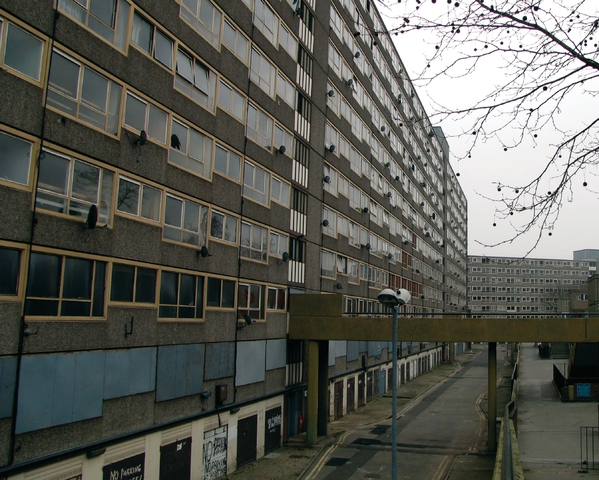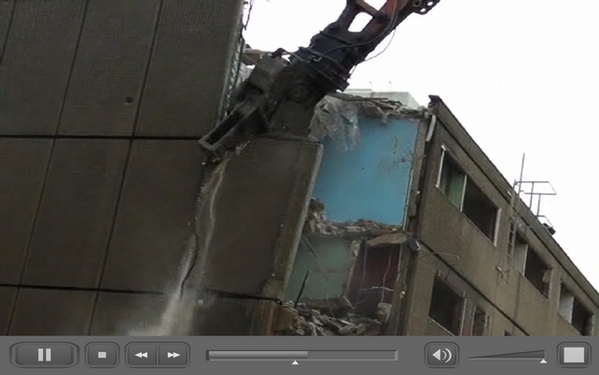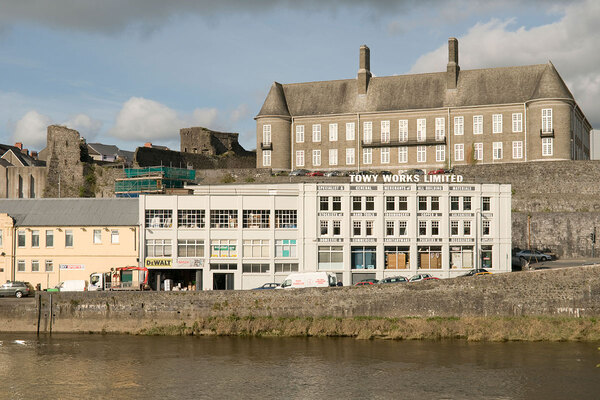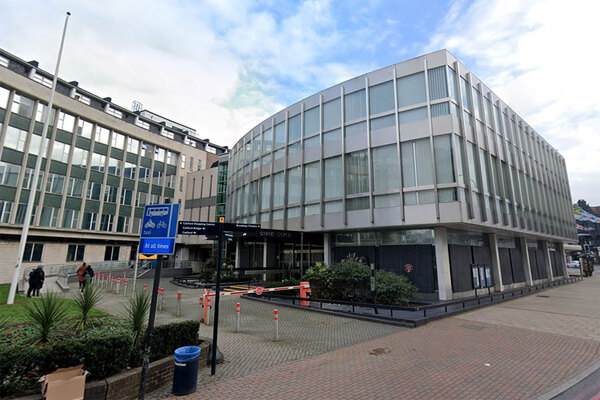You are viewing 1 of your 1 free articles
Heygate goes...
This is the way the Heygate Estate ends – not with a bang but a whimper, says Kate Youde reporting from the scene
There were no symbolic explosions or wrecking balls to mark the start of the final demolition stage at the Southwark landmark on today. Instead, the latest turn in the controversial estate regeneration project was markedly subdued.
The council and its regeneration partner, Lend Lease, invited journalists to watch as work progressed to bring down the 1970s ‘concrete fortress’, which was deemed not fit for purpose and is being replaced with nearly 2,500 mixed-tenure homes.
As the ‘Welcome 2 McHell’ message daubed across one of the concrete walkways, for which the estate is notorious, suggests, not everyone in the neighbourhood welcomes the change.
To be honest, there was not much to see on this ‘big day for Southwark’ - a solitary block of concrete roof hung in the air from a crane. The design of the drab high-rise blocks means that, for health and safety reasons, the demolition team must take down the buildings piece by piece, painstakingly reversing the construction process of decades earlier.
‘It’s almost like a house of cards,’ Dick Davy, project manager for Lend Lease, tells me, ‘[so] that if we blew it up we wouldn’t know where it would land, as it were, so what we are doing is disassembling it in the reverse order it was built.’
We are standing on the roof of the old community centre opposite the bleak façade of the Kingshill block. Following small-scale demolition work, the first concrete blocks are starting to be removed on the main development site.
Once workers have brought the 12-storey building down to the sixth floor, ‘crunch and munch’ machinery will take over to bring it to the ground. The demolition process across the whole estate will take 15 months.
While this may be less dramatic than an explosion, it is probably no less poignant for some of the 3,000-plus people who once called the estate home. The last resident, teacher Adrian Glasspool, was forcibly evicted by police in November.
The only remaining signs of the community who once lived here are the belongings left behind. ‘I’ve found lots of photos and things and think, “Why didn’t people take them?”’ says Dean Bainbridge, 27, part of the team stripping flats back to their shells ready for the heavy demolition work.
The £1.5 billion regeneration project is more personal for Kavyne Morris, 24, a site administrator for the demolition company Keltbray, than most workers. She moved out the estate’s Claydon block in 2009.
‘I think most of the people on my landing were quite happy to go and there were quite a few who were overcrowded and needed to go,’ she says. ‘There was an elderly gentleman on the fourth floor and the lift was always breaking.’
But while Ms Morris is excited about the change on its way, there is another side of the story not represented at the council’s photo call. As she acknowledges, there has been ‘a lot of uproar’ about the pricing of the new development.
With only 25 per cent of the new homes set to be affordable housing, many former Heygate residents, who the council started rehousing from the estate in 2008, will be priced out of the area.
‘I am not sure how many people who lived here are actually wanting to come back or looking to come back,’ says a philosophical Ms Morris. ‘It’s development isn’t it, so it’s the nature of the game, to be fair.’
Fiona Colley, cabinet member of regeneration at Southwark council, says it had never been the plan that all the homes within Heygate would be replaced on site.
She believes it is important that the concrete blocks, which have symbolised the estate, are coming down because local people can now really believe the regeneration is happening.
‘It’s a really big day for Southwark,’ she tells me. ‘The proposals to bring down the Heygate Estate date back about 15 years now. It’s taken us a lot of time to get here so it’s fantastic the estate’s finally come down and we are well on the way to delivering the new homes and new neighbourhood we have promised people.’
We discuss the benefits she says the development will bring to the area, not just in terms of housing but also jobs.
And then we’re back to the bang. ‘A bit of me wishes we were blowing it up but I appreciate that wouldn’t be very safe,’ she says.









